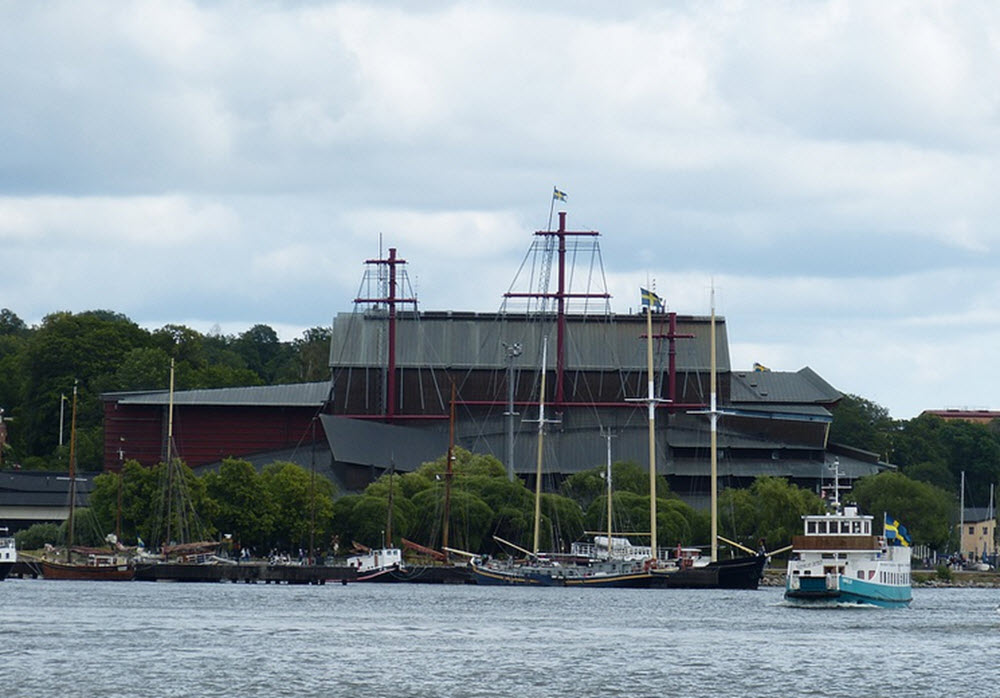The Vasa Museum (Swedish: Vasamuseet) is a maritime museum housing an almost fully intact 17th century Swedish warship that was salvaged from the Baltic Sea in 1961.
The 64-gun warship Vasa sank on her maiden voyage in 1628. It is the world’s only salvaged almost fully intact ship from the 1600s.
The main hall of the museum is dominated by the ship itself, and she can be observed from six different levels – from the keel at the lowest level and up to the top of sterncastle at the uppermost level.
Some damaged or missing parts of the ship have been reconstructed, and to make this clear to the visitor, they have not been treated or painted. It is therefore very easy to know which parts of the ship that are original and which parts that have been added in our time. The Vasa has for instance been fitted with a new bowsprit and winter rigging.
The museum also houses several exhibits focused on archeological findings made onboard and around the ship at the bottom of the sea. Models have also been created to teach visitors about how the ship was constructed, how it sank, and how is was recovered. Thousands of well-preserved artifacts were salvaged from the wreck site in 1961, and these objects have provided scholars with valuable insight into early 17th-century Sweden.
Where is the museum?
The museum is located on the island of Djurgården in Stockholm, the capital of Sweden.
Address: Galärvarvsvägen 14, 115 21 Stockholm
About the ship
Vasa is a Swedish warship built in 1626-1628 on the orders of King Gustavus Adolphus of Sweden. She was built as a part of the war effort, as Sweden was embroiled in an armed conflict with Poland-Lithuania in 1621-1629. The was armed with 64 guns, including four dozen 24-pounder canons. Her bronze cannons were cast in Stockholm specifically for this ship. Upon completion, Vasa was one of the world’s most powerfully armed vessels.
On her maiden voyage from Stockholm on 10 August 1628, she foundered after sailing just 1,300 meters and encountering a wind stronger than a breeze. She had been ordered to sea despite warnings of her being perilously unstable, as she was carrying too much weight in the upper structure of the hull.
Most of her valuable bronze cannons were salvaged, but after that, she fell into obscurity.
The wreck was re-discovered in the 1950s, and in 1961, it could be salvaged with a largely intact hull. Thousands of artifacts were also salvaged, and the remains of at least 15 people were found in and around the wreck.
Origins of the museum
After being salvaged in 1961, the ship Vasa was housed in a special structure called Wasavarvet where she was treated with polyethylene glycol to combat destruction. Visitors were allowed, but they could only view the ship from two levels and never get closer than five meters.
In the early 1980s, the Swedish government decided that a permant museum was to be constructed for the ship, at the dry dock of the old naval yard in Stockholm. Construction commenced in 1987, and in the summer of 1989, the still only half-finnished museum received 228,000 visitors.
The Vasa Museum opened in 1990.

